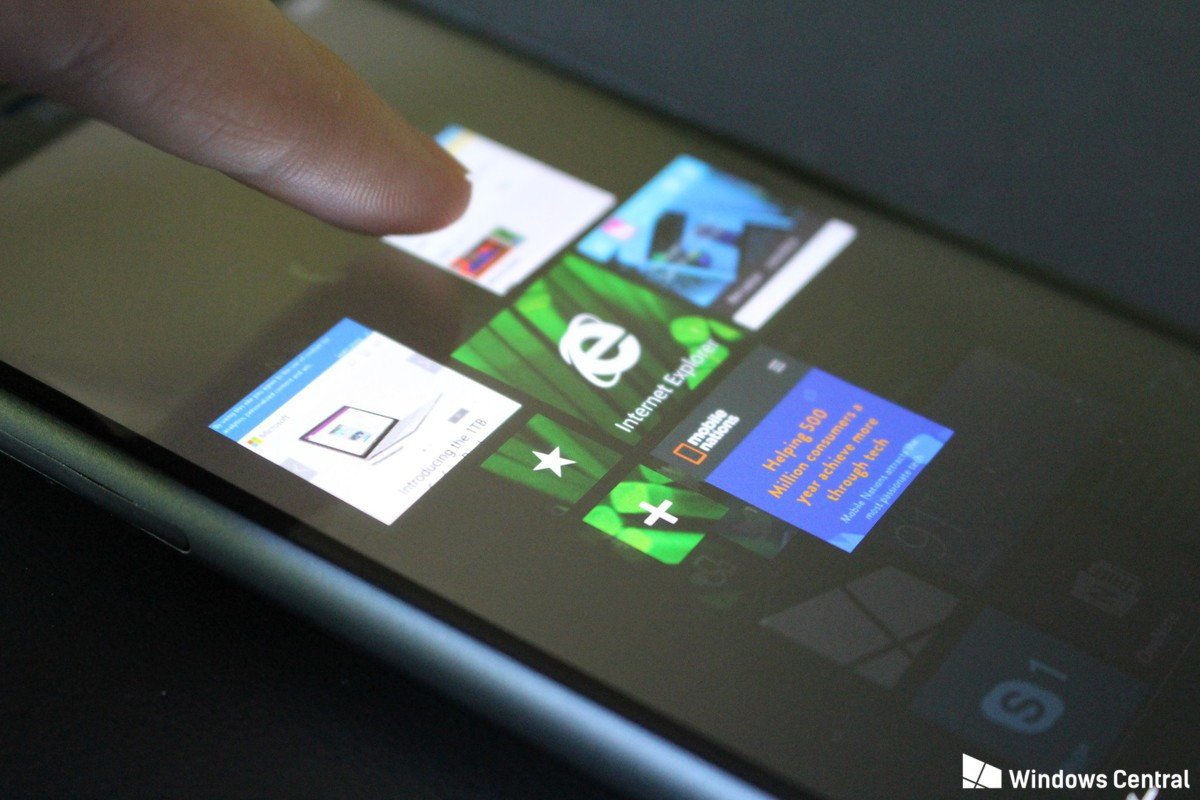Windows phone didn't fail because of Live Tiles
Is the Windows phone Live Tile UI inherently unintuitive? Some people think it is and claim that it's at the root of Microsoft's mobile woes.

The claim that the unique Live Tile-based UI is inherently unintuitive and the cause of Windows phone's failure I think is limited in perspective. It is more the timing of the introduction of the Windows phone UI into the market that resulted in its rejection and the platform's failure.
The problem isn't the tiles
The fact that many consumers who are presented a Windows phone find the UI initially off-putting must be considered within the context that most smartphone users are using iOS and Android.
Consequently, the unfamiliar Live Tile UI, like most things unknown, has an inherent learning curve. The ease with which users switch between the iPhone and Android phones with fewer hiccups than moving between those platforms and Windows phones has to do with the similar static icon-based UI iOS and most Android phones share. In a nutshell, in an iPhone and Android dominated market smartphone users are used to a static icon-based UI and have little problem switching between what's familiar.
Microsoft research demos interactive Live Tiles between PC and phone.
This reality does not necessarily support a claim that a static-icon based UI is more intuitive than a Live Tile UI as some may believe.
I don't believe that the Windows phone Live Tile UI is inherently unintuitive. What I do believe is that by the time Microsoft brought it to market, its lateness simply made it "unfamiliar" to the masses of smartphone users. If Microsoft was earlier to market with Windows Phone 7, perhaps before the iPhone or concurrent to its introduction, things may have turned out differently for Microsoft.
Defining a new paradigm
There's a saying that the early bird gets the worm. If Microsoft were earlier to the consumer smartphone space, perhaps its Live Tile UI would have helped define the consumer smartphone experience.
All the latest news, reviews, and guides for Windows and Xbox diehards.
Microsoft's Computer Human Interaction Group demonstrates the unfulfilled potential of Live Tiles on phone and PC.
In 2007 smartphones were new to the consumer masses (though old hat to the enterprise and techies) after all. At that time feature phones with their archaic UI's defined the mobile experiences for the masses.
Any new UI could have replaced that experience. The icon-based UI that Apple succeeded with was due to good timing, a good product, and great marketing.
What if Microsoft and Live Tiles were first?
Suppose Microsoft had introduced Windows Phone 7 on the heels of a feature phone consumer market rather than chasing an iOS and Android consumer market in 2010.
The frame of reference in that context would have been a feature phone UI compared to a Live Tile-based UI. The touch friendly, Live Tile, information-rich fluid Windows phone UI would have been an incredible leap in the mobile experience of consumers. Users would not have seen the touch-friendly Windows Phone 7 UI and OS as inherently unintuitive.
Microsoft who was first to the enterprise smartphone space was too slow in bringing its vision of a mobile OS to the consumer masses. Unlike what it accomplished in the PC space, it lost the opportunity to define what a mobile personal computing would be for consumers. I'm reminded of the proverb:
How long wilt though sleep, O sluggard? When wilt thou arise out of thy sleep? Yet a little sleep, a little slumber, a little folding of the hands to sleep: so shall thy poverty come as one that travaileth…
Microsoft as a company is by no means impoverished, but its mobile efforts have yielded an expected and ever-decreasing number to its balance sheets. The company's contentment with its PC position and its over 40 percent smartphone market share at its peak caused the company to become slothful in its mobile strategy.
Steve Ballmer mocks iPhone.
The often mocked mockery of the iPhone by former Microsoft CEO Steve Ballmer summarizes this point.
Microsoft, not Live Tiles was the problem with mobile
Though Live Tiles aren't and never were by their nature an inherent barrier to the adoption of Windows phones, the timing of their introduction into a smartphone experience defined by a static icon-based experience is a problem to the UI's adoption.
How the new Windows 10 Start menu may help Windows phones succeed
Microsoft seems intent on holding on to Live Tiles as evidenced by their use in the Windows 10 Start Menu. This is good news to millions of ardent Windows phone fans who love Live Tiles. But Microsoft is going to have to do better if it wants Live Tiles to keep up or stay ahead of the evolving mobile experience.
Microsoft and developers must be willing to advance Live Tile functionality and the experience making them more consistent with their original vision going forward. For instance, Live Tile's must always display the latest information, must have notifications for all apps, should be more interactive, and the return of the Me Tile with added functionality are just some things Microsoft should bring to the table.
Windows Central's Daniel Rubino demonstrates exploding Mixed View Live Tiles on canceled McLaren.
Exploding Live Tiles or Mixed View, which provides access to additional app content or functions seems to be a vision that Microsoft has forsaken with the ill-fated McLaren. Apple, on the other hand, has taken and applied that concept with force touch in iOS. Microsoft would do well to revisit Mixed View.
The sad truth every Windows phone enthusiast must accept is that Live Tiles aren't at the root of Windows phone's woes, Microsoft is. Let's hope Microsoft has learned from its mistakes.
Further reading
Even if Windows 10 Mobile succeeded Microsoft would have pursued a post smartphone strategy

Jason L Ward is a Former Columnist at Windows Central. He provided a unique big picture analysis of the complex world of Microsoft. Jason takes the small clues and gives you an insightful big picture perspective through storytelling that you won't find *anywhere* else. Seriously, this dude thinks outside the box. Follow him on Twitter at @JLTechWord. He's doing the "write" thing!



